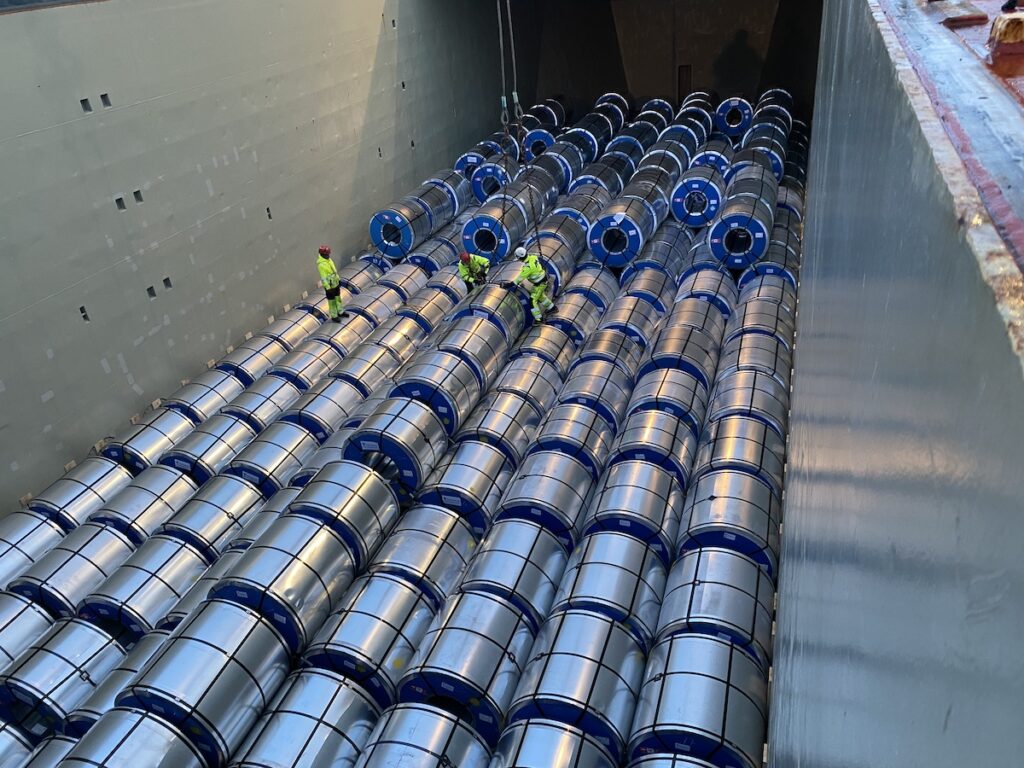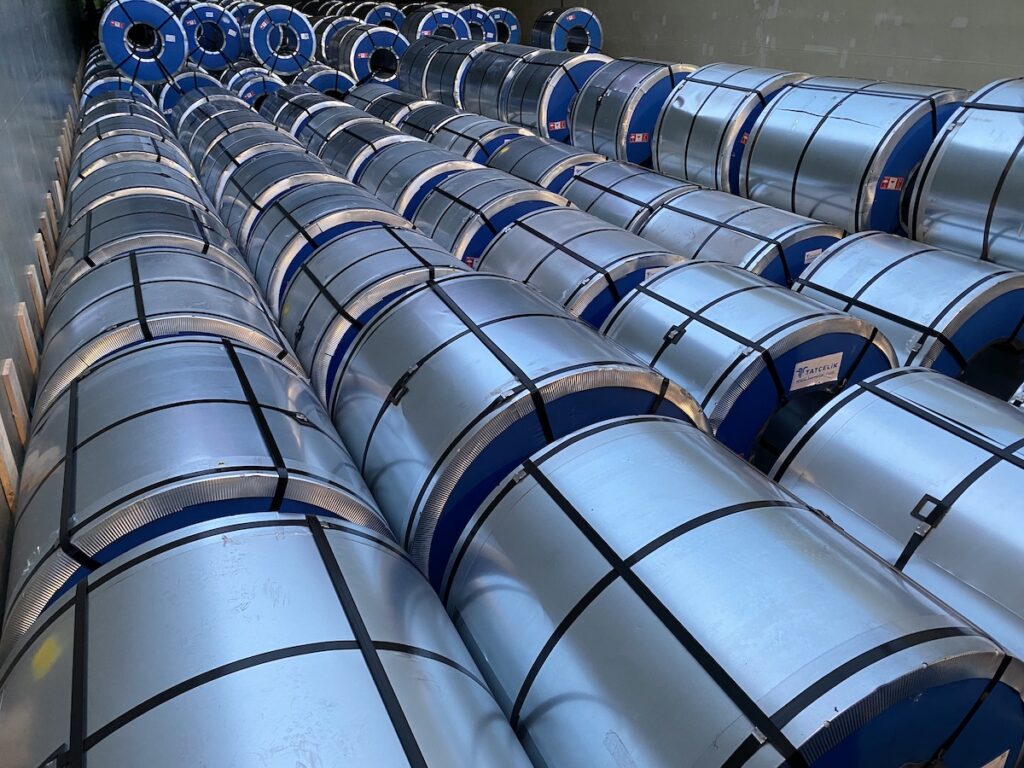Neo-bulk cargo refers to a type of cargo that is transported in large quantities but cannot be classified as either liquid or dry bulk cargo. It is a term used in the shipping industry to describe a variety of goods that are transported in large quantities, usually in bags, boxes, or other packaging. Neo-bulk cargo is typically transported on specialized ships that are designed to handle this type of cargo.
Examples of neo-bulk cargo include goods such as steel products, forest products, and project cargo. Steel products, such as coils and sheets, are often transported in large quantities on specialized ships that are equipped with cranes to load and unload the cargo.

Forest products, such as paper and pulp, are also commonly transported as neo-bulk cargo. Project cargo, which includes items such as wind turbines and industrial machinery, is another example of neo-bulk cargo that requires specialized handling.
Neo-bulk cargo is an important segment of the shipping industry, accounting for a significant portion of global trade. The transportation of neo-bulk cargo requires specialized knowledge and expertise, as well as specialized equipment and infrastructure. As global trade continues to grow, the demand for the transportation of neo-bulk cargo is expected to increase, making it an important area of focus for the shipping industry.
Definition of Neo-bulk Cargo
Neo-bulk cargo is a type of cargo that is not classified as liquid or dry bulk cargo. It is a type of cargo that is transported in large quantities, but not in bulk form. Neo-bulk cargo is often transported in unitized forms, such as bags, boxes, drums, or barrels. It is also sometimes referred to as “general cargo” or “break bulk cargo“.
Neo-bulk cargo is typically transported on container ships, but can also be transported on other types of vessels such as bulk carriers, ro-ro ships, or general cargo ships. The transportation of neo-bulk cargo requires specialized handling equipment and procedures to ensure that the cargo is loaded and unloaded safely and efficiently.
Examples of neo-bulk cargo include:
- Steel coils
- Timber
- Paper products
- Automobiles
- Heavy machinery
- Project cargo
Neo-bulk cargo is an important component of international trade, as it includes a wide range of goods that are essential to many industries. The transport of neo-bulk cargo requires careful planning and coordination to ensure that the cargo is delivered safely and on time.
Types of Neo-bulk Cargo
Neo-bulk cargo is a type of cargo that is transported in large quantities, but not in bulk. It is often packaged in bags, boxes, drums, or on pallets. Neo-bulk cargo is typically transported on specialized ships, and requires special handling and stowage methods.
There are several types of neo-bulk cargo, including:
- Project cargo: This type of neo-bulk cargo includes large, heavy, and oversized items that are used in construction projects, such as generators, turbines, and steel structures.
- Roro cargo: This type of neo-bulk cargo is transported on roll-on/roll-off ships, and includes vehicles, trailers, and other wheeled cargo.
- Breakbulk cargo: This type of neo-bulk cargo is transported on ships that are equipped with cranes, and includes items that are too large or heavy to be transported in containers, such as machinery, steel coils, and timber.
- Containerized cargo: This type of neo-bulk cargo is transported in containers, and includes items such as electronics, clothing, and consumer goods.
- Bulk bags: This type of neo-bulk cargo includes items that are transported in large bags, such as fertilizer, sugar, and grain.
- Palletized cargo: This type of neo-bulk cargo is transported on pallets, and includes items such as bricks, tiles, and cement.
Each type of neo-bulk cargo requires specific handling and stowage methods to ensure that it is transported safely and efficiently. For example, project cargo may require specialized lifting equipment, while containerized cargo may require refrigeration to maintain the quality of perishable goods.
Overall, neo-bulk cargo is an important component of the global trade industry, and plays a vital role in transporting goods and materials around the world.

Examples of Neo-bulk Cargo
Neo-bulk cargo refers to goods that are transported individually and not in bulk, but still require special handling due to their size, weight, or shape. Here are some examples of neo-bulk cargo:
- Steel coils
- Pipes and tubes
- Timber and lumber
- Paper rolls
- Heavy machinery
- Wind turbine components
- Automobiles
- Large pieces of equipment
One of the defining characteristics of neo-bulk cargo is that it cannot be easily loaded or unloaded with standard equipment. Instead, specialized cranes, forklifts, or other machinery are required to move these goods.
For example, steel coils are often transported on flatbed trucks or railcars, but require a special coil trailer for loading and unloading. Similarly, wind turbine components are often transported on flatbed trucks, but require specialized cranes to lift them into place.
Another characteristic of neo-bulk cargo is that it is often shipped in smaller quantities than traditional bulk cargo. This means that it may be more expensive to transport, but also allows for greater flexibility and customization in shipping options. For example, a company may choose to ship a single piece of heavy machinery by air freight, rather than waiting for a full container load to be shipped by sea.
Advantages and Disadvantages of Neo-bulk Cargo
Neo-bulk cargo is a type of cargo that is transported in large quantities but is not classified as bulk cargo. There are several advantages and disadvantages of transporting neo-bulk cargo.
Advantages
- Neo-bulk cargo can be transported in a variety of ways, including container ships, breakbulk ships, and roll-on/roll-off ships. This makes it easier to transport neo-bulk cargo to different parts of the world.
- Neo-bulk cargo can be loaded and unloaded quickly, which reduces the time that ships spend in port. This can help to reduce shipping costs.
- Neo-bulk cargo is often less expensive to transport than bulk cargo, because it does not require specialized equipment or handling.
Disadvantages
- Neo-bulk cargo is often more difficult to handle than bulk cargo, because it can be irregular in shape and size. This can make it more difficult to load and unload, and can increase the risk of damage to the cargo.
- Neo-bulk cargo is often more expensive to transport than containerized cargo, because it requires specialized handling and equipment.
- Neo-bulk cargo is often more susceptible to damage during transport, because it is not as well-protected as containerized cargo.
Examples of neo-bulk cargo include steel coils, paper rolls, and automobiles. These types of cargo are often transported in large quantities, but are not classified as bulk cargo because they are not homogeneous in nature.
Conclusion
In conclusion, Neo-bulk cargo is a type of cargo that is not easily classified as either bulk or general cargo. It is often too big or too heavy to be considered general cargo, but not large enough to be classified as bulk cargo. Neo-bulk cargo is typically transported in large quantities and is often shipped on specialized vessels.
Some examples of Neo-bulk cargo include steel coils, lumber, and heavy machinery. These types of cargo require special handling and transportation methods to ensure their safe delivery to their destination.
Overall, Neo-bulk cargo plays an important role in the global transportation industry. As the demand for large and heavy cargo continues to grow, it is likely that the importance of Neo-bulk cargo will only increase in the coming years.
- Types of Gas Carriers as per IGC Code – April 22, 2025
- Wind-Assisted Propulsion Systems (WAPS): A Game Changer for Maritime Decarbonization – February 6, 2025
- 10 Boat Salvage Yards in California – January 25, 2025



